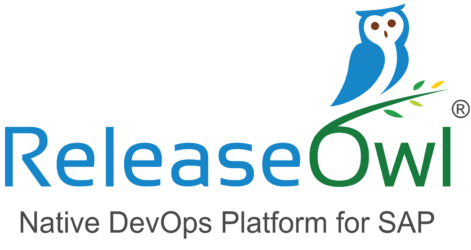SAP PMO
Filter By
Browse By
- SAP Analytics and AI
- SAP Application Development and Integration
- All SAP Application Development and Integration
- SAP ABAP
- SAP ABAP Development Tools
- SAP ABAP Test Cockpit
- SAP API Management
- SAP BAPI
- SAP Basis
- SAP BRF
- SAP Business Application Studio
- SAP CMS
- SAP Design Studio
- SAP Development Tools
- SAP DevOps
- SAP EAI
- SAP EDI
- SAP Extension Suite
- SAP Fiori
- SAP Fiori Elements
- SAP Integration Suite
- SAP Low Code Application Development
- SAP Low Code Automation
- SAP Netweaver
- SAP Release Management
- SAP UI5
- SAP Web Application Server
- SAP Web IDE
- SAP Business Process Management
- SAP Center of Excellence
- SAP CIO
- SAP Customer Experience
- SAP Data and Data Management
- All SAP Data and Data Management
- SAP BW
- SAP BW/4HANA
- SAP Crystal Reports
- SAP Data Archiving
- SAP Data Center
- SAP Data Governance
- SAP Data Integration
- SAP Data Migration
- SAP Data Quality
- SAP Data Services
- SAP Data Strategy
- SAP Data Visualization
- SAP Data Warehouse Cloud
- SAP DMS
- SAP Document Control
- SAP EIM
- SAP ETL
- SAP ETL Tools
- SAP HANA
- SAP HANA Administration
- SAP HANA Deployment Infrastructure
- SAP HANA Studio
- SAP Master Data
- SAP Master Data Governance
- SAP MDM
- SAP Enterprise Architect
- SAP Enterprise Asset Management
- SAP ERP
- SAP Finance
- All SAP Finance
- SAP Accounting
- SAP AR AP
- SAP Asset Accounting
- SAP Billing Systems
- SAP BPC
- SAP BRIM
- SAP Cash Management
- SAP Central Finance
- SAP Controlling
- SAP COPA
- SAP Cost Center Accounting
- SAP Currency Risk
- SAP e-invoicing
- SAP FICO
- SAP Finance Automation
- SAP Advanced Financial Closing
- SAP Financial Consolidation
- SAP Financial Planning
- SAP FX Risk
- SAP General Ledger
- SAP Global Tax Management
- SAP Hyperion
- SAP Order to Cash
- SAP Payment Processing
- SAP Profitability Analysis
- SAP Rebate Management
- SAP S/4HANA Finance
- SAP SWIFT Compliance
- SAP Treasury Management
- SAP Universal Journal
- SAP Governance Risk and Compliance
- SAP Human Capital Management
- SAP Intelligent Technologies
- SAP Platform and Technology
- All SAP Platform and Technology
- SAP Business Technology Platform
- SAP Cloud
- SAP Cloud Connector
- SAP Cloud Integration Platform
- SAP Cloud Migration
- SAP Cloud Platform
- SAP Cloud Providers
- SAP Cloud Strategy
- SAP Digital Signature
- SAP Container Platform
- SAP HANA Enterprise Cloud
- SAP Digital Asset Management
- SAP Smart Forms
- SAP HEC
- SAP Digital Integration Hub
- SAP Hyperscalers
- SAP Infrastructure
- SAP Messaging
- SAP Quality and Testing
- SAP Security
- SAP Spend Management
- SAP Supply Chain Management
- All SAP Supply Chain Management
- SAP APO
- SAP Asset Management
- SAP Business Network
- SAP Digital Manufacturing Cloud
- SAP Digital Twin
- SAP EWM
- SAP IBP
- SAP Inventory Management
- SAP Label Printing
- SAP Logistics
- SAP Manufacturing
- SAP Manufacturing Automation
- SAP MES
- SAP MII
- SAP MM
- SAP MRO
- SAP MRP
- SAP Order Management
- SAP Plant Maintenance
- SAP PLM
- SAP Production Planning
- SAP S&OP
- SAP SD
- SAP SPM
- SAP Supply Chain Planning
- SAP Track and Trace
- SAP Transportation Management
- SAP System Administration
A Project Management Office (PMO)
is a team that sets and maintains the standards for project management within an organization. It is in charge of creating procedures and best practices that will help the organizations operations work smoothly. Functions often include control, training, coaching, and mentoring to support the project manager. This work provides the project manager more time to develop a project quickly. For large projects it can represent a considerable amount of savings per project, resulting in better customer satisfaction and productivity improvements.
A Project Management Office (PMO)
is a team that sets and maintains the standards for project management within an organization. It is in charge of creating procedures and best practices that will help the organizations operations work smoothly. Functions often include control, training, coaching, and mentoring to support the project manager. This work provides the project manager more time to develop a project quickly. For large projects it can represent a considerable amount of savings per project, resulting in better customer satisfaction and productivity improvements.
Key Capabilities of SAP PMO include:
- Choosing the right mix of projects, an element of strategic planning
- Linking executive strategies with ongoing and future projects
- Managing the product portfolio correctly
- Improving the results of projects, strategically aligned with the company objectives
The first step is from management to give a medium and long-range strategy, outlining the steps to be achieved. The PMO team often bridges the gap between the strategic vision of the company and the implementation.
SAP PMO performs the following tasks:
- Define the project type and project plan
- Initiate sprints
- Manage project issues and risks
- Manage project documentation
- Manage quality gates and sign off
- Close sprints
It is possible to improve the rate of successful projects in addition to those that come in under budget, meet time requirements, and meet milestones. A good PMO has the resources needed for delivery, has a plan, and holds meetings for town hall project updates. The definition of the roles and responsibilities of the PMO members are critical key factors for this success.
Success factors in the implementation of an SAP PMO include:
- Ability to define quantifiable measures
- Determining the right time to observe those results
- Making sure the PMO has the necessary resources
- Working to establish creditability in the organization
- Having a great project manager
Key considerations for SAPinsiders are:
- How to Design a Planner Workbench for Improving Planner Productivity. This article explains how the standard SAP ERP Central Component (ECC) interface helps production planners update different planning objects and parameters. Learn how to design an interface to help you improve productivity.
36 results
-

 Premium
Premium
Improve Project Governance with a RACI Matrix
Reading time: 16 mins
See how to construct a matrix that governs responsibilities in your organization. Given the amorphous and increasingly global nature of organizations today, project teams face numerous challenges in identifying the kind of roles different players play. As an example, who is responsible for creating business process procedures (BPPs) for the order-to-cash process that you are...…
-

 Premium
Premium
Achieve Increased Efficiency through the Integration of Maintenance and Production
Reading time: 15 mins
Learn the steps to build the integration between maintenance activities and production planning/detailed scheduling in SAP Advanced Planning & Optimization. See how integration between these areas and departments creates more visibility over common processes to help alert planners to possible downtimes and lack of materials. Key Concept Many companies rely on SAP Production Planning (PP)...…
-

 Premium
Premium
Indirect Valuation Modules: Customize Your Wage Calculations
Reading time: 25 mins
R/3 provides a variety of indirect valuation modules for determining the entry amounts for wage types. However, in many scenarios, the existing modules may not suffice and you may need to create your own. Moreover, these computed entry amounts are not stored in the same manner as other fields of an infotype. The handling of...…
-
-

 Premium
Premium
Outsourcing Your Support? Here Are 6 Reasons You Should Be Using SAP Solution Manager Anyway
Reading time: 8 mins
ManagementWhile every SAP customer owns a version of SAP Solution Manager, far too many overlook the full range of capabilities offered by the tool. In this article, experts weigh in on the SAP Solution Manager functionalities you should consider and offer tips for getting started. When it was first introduced in 2004, SAP Solution Manager...…
-

 Premium
Premium
How Wage Type Valuation Bases Turn Payroll Numbers into Money
Reading time: 16 mins
Within any payroll, there will always be payments input as numbers that then need to be converted into money. The method of achieving this in R/3 is known as the “wage type valuation base.” The author gives some background on valuation bases and shows how each works. He provides two examples of using valuation bases...…
-

 Premium
Premium
Chaos Theory: The Path to Project Clarity at Siemens Energy
Reading time: 12 mins
ManagementManaging a project list at a global corporation with multiple instances of SAP is an extremely complex endeavor. Just a few years ago, Siemens Energy was challenged by rampant chaos in its project portfolio, but by adhering to a strict clarity-oriented discipline of personal accountability, the company has enjoyed vastly improved transparency and predictability in...…
-

- SAP Development Tools
 Premium
Premium
How to Select the Right Mobile Solution Architecture for Your Use Case
Reading time: 24 mins
Understand the main mobility architecture paradigms currently supported by the Sybase Unwired Platform, and the advantages and drawbacks of each. Get a high-level view of the architecture and basic steps for implementing each. Key Concept A mobile business object is a method of encapsulating business data so that it can be used across multiple kinds...…
-
-

- SAP ABAP Test Cockpit
 Premium
Premium
Implement Proven Testing Practices and Techniques for Large-Scale Global SAP Rollouts
Reading time: 21 mins
Learn how to avoid mistakes that plague many SAP implementations associated with flawed testing approaches. Take away valuable information that you can use as a baseline for either enhancing the status quo at your respective projects or for avoiding potential mistakes before testing is initiated. Key Concept Initial implementations and major system upgrades usually include...…
-

Past-to-Present SAP Access Management Best Practices
Reading time: 13 mins
What do you do when what used to be acceptable is no longer adequate? How efficiently is your organization managing SAP ERP access and role-design? How pleased are your auditors with the control and reporting you offer? How pleased are your users with the processes they have to follow to get and retain access? How...…
-

- SAP S/4HANA Implementation
 Premium
Premium
What Decision Makers Need to Know to Move to SAP S/4HANA Effectively
Reading time: 13 mins
In this article, we’ll spotlight the 10 key areas for success in SAP S/4HANA implementations, using insights from our executives and experts in SAP’s Chief Customer Office, a group dedicated to facilitating successful transformations. And rather than explaining why projects fail, we’re going to tell you what makes them succeed. You’ve heard the horror stories…
Become a Member
Unlimited access to thousands of resources for SAP-specific expertise that can only be found here.
Become a Partner
Access exclusive SAP insights, expert marketing strategies, and high-value services including research reports, webinars, and buyers' guides, all designed to boost your campaign ROI by up to 50% within the SAP ecosystem.
Upcoming Events
Related Vendors
Your request has been successfully sent


